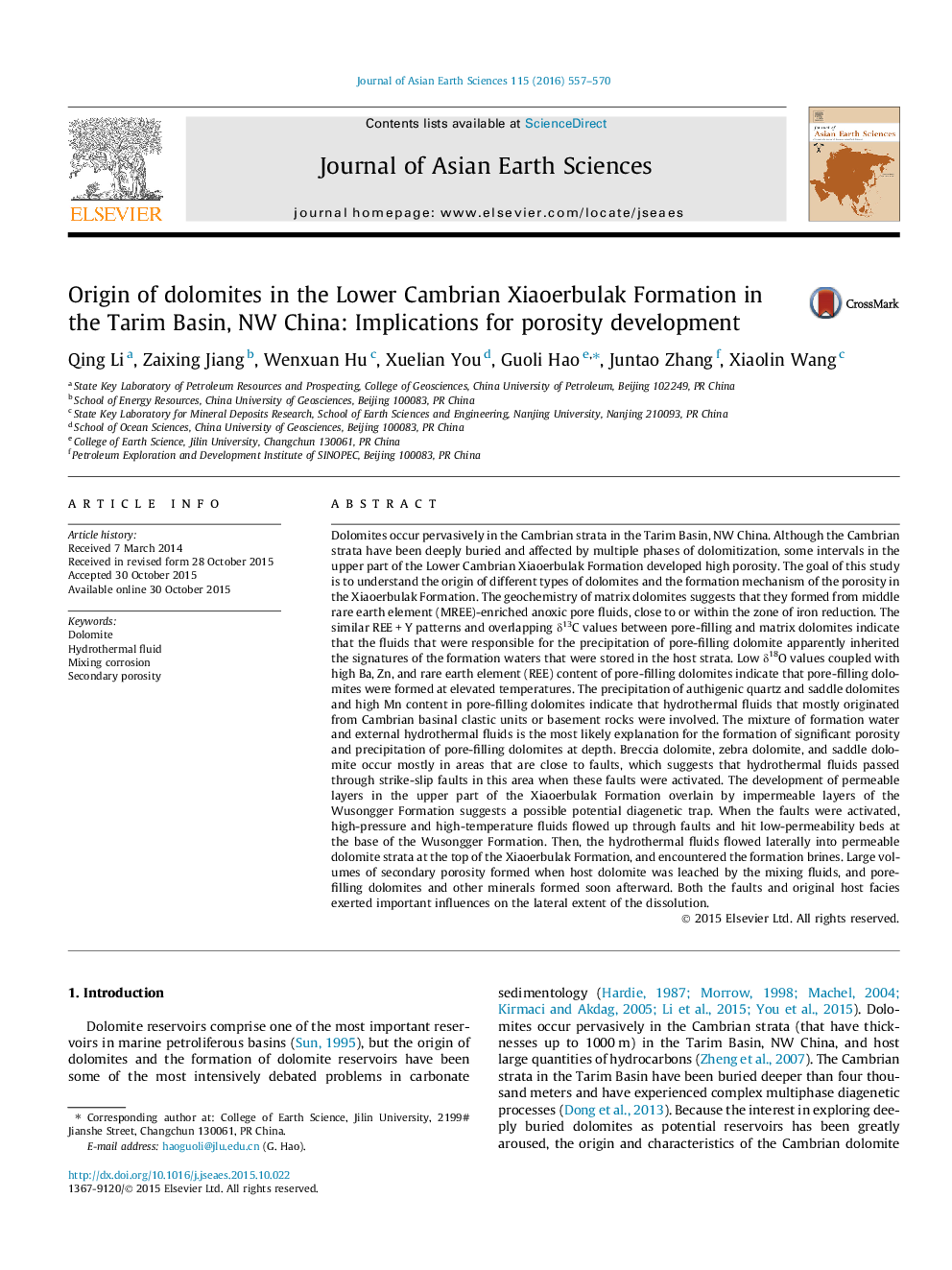| کد مقاله | کد نشریه | سال انتشار | مقاله انگلیسی | نسخه تمام متن |
|---|---|---|---|---|
| 6444034 | 1640356 | 2016 | 14 صفحه PDF | دانلود رایگان |
عنوان انگلیسی مقاله ISI
Origin of dolomites in the Lower Cambrian Xiaoerbulak Formation in the Tarim Basin, NW China: Implications for porosity development
دانلود مقاله + سفارش ترجمه
دانلود مقاله ISI انگلیسی
رایگان برای ایرانیان
کلمات کلیدی
موضوعات مرتبط
مهندسی و علوم پایه
علوم زمین و سیارات
زمین شناسی
پیش نمایش صفحه اول مقاله

چکیده انگلیسی
Dolomites occur pervasively in the Cambrian strata in the Tarim Basin, NW China. Although the Cambrian strata have been deeply buried and affected by multiple phases of dolomitization, some intervals in the upper part of the Lower Cambrian Xiaoerbulak Formation developed high porosity. The goal of this study is to understand the origin of different types of dolomites and the formation mechanism of the porosity in the Xiaoerbulak Formation. The geochemistry of matrix dolomites suggests that they formed from middle rare earth element (MREE)-enriched anoxic pore fluids, close to or within the zone of iron reduction. The similar REE + Y patterns and overlapping δ13C values between pore-filling and matrix dolomites indicate that the fluids that were responsible for the precipitation of pore-filling dolomite apparently inherited the signatures of the formation waters that were stored in the host strata. Low δ18O values coupled with high Ba, Zn, and rare earth element (REE) content of pore-filling dolomites indicate that pore-filling dolomites were formed at elevated temperatures. The precipitation of authigenic quartz and saddle dolomites and high Mn content in pore-filling dolomites indicate that hydrothermal fluids that mostly originated from Cambrian basinal clastic units or basement rocks were involved. The mixture of formation water and external hydrothermal fluids is the most likely explanation for the formation of significant porosity and precipitation of pore-filling dolomites at depth. Breccia dolomite, zebra dolomite, and saddle dolomite occur mostly in areas that are close to faults, which suggests that hydrothermal fluids passed through strike-slip faults in this area when these faults were activated. The development of permeable layers in the upper part of the Xiaoerbulak Formation overlain by impermeable layers of the Wusongger Formation suggests a possible potential diagenetic trap. When the faults were activated, high-pressure and high-temperature fluids flowed up through faults and hit low-permeability beds at the base of the Wusongger Formation. Then, the hydrothermal fluids flowed laterally into permeable dolomite strata at the top of the Xiaoerbulak Formation, and encountered the formation brines. Large volumes of secondary porosity formed when host dolomite was leached by the mixing fluids, and pore-filling dolomites and other minerals formed soon afterward. Both the faults and original host facies exerted important influences on the lateral extent of the dissolution.
ناشر
Database: Elsevier - ScienceDirect (ساینس دایرکت)
Journal: Journal of Asian Earth Sciences - Volume 115, 1 January 2016, Pages 557-570
Journal: Journal of Asian Earth Sciences - Volume 115, 1 January 2016, Pages 557-570
نویسندگان
Qing Li, Zaixing Jiang, Wenxuan Hu, Xuelian You, Guoli Hao, Juntao Zhang, Xiaolin Wang,